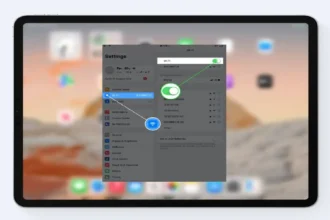MongoDB is one of the most popular cloud database platforms you can use today. In fact, it has been downloaded more than 325 million times. Beyond its solid performance, those numbers can largely be chalked up to the fact that it is an open-source and cross-platform tool. This means developers have more flexibility in terms of what OS they use and how they want to modify the code for any specific need.
Developers that need a NoSQL database management platform go for MongoDB because it uses horizontal scaling, which means data storage is more flexible. It’s non-relational as well, so you can query and index data more efficiently. For those on a primarily macOS-based workstation, this can be a real boon in tandem with other programming languages to create and manage applications quickly. After all, the Apple App Store has seen an increase in apps, with more than 1.6 million apps on iOS available now.
If you’re looking to make use of your Macbook for a MongoDB database, you’ll be glad to know that compatibility is no problem as long as you choose the right edition for your OS version. From installation to actual usage, here are a few quick steps to help you maximize the platform on Mac.
How to Install MongoDB on MacOS
To install MongoDB Community Edition, you need to first use Homebrew. This will be the package manager that allows you to actually install the platform.
In the command line of your macOS Terminal, run this command: xcode-select –install
To ensure compatibility, type: brew update
Then, get the Homebrew MongoDB formula and toolkit by typing the command: brew tap mongodb/brew
Finally, run the command:
| brew install mongodb |
Of course, you can also specify the exact version you are installing. For example, Community Edition 6 would require you to run this command instead:
| brew install [email protected] |
How to Run MongoDB on MacOS
Now that you have MongoDB installed, you should have access to the mongod server, mongos sharded cluster query router, and MongoDB Shell mongosh. For this, we’ll assume you have the latest supported release, which is Community Edition 6.
Although you can also run it manually as a background process, using the brew method to run it as a macOS service is generally the better option because this allows for correct ulimit values to be set automatically. To do this, run the command:
| brew services start [email protected] |
If you want to verify that MongoDB is running as intended, you can run:
| brew services list |
Now, you’ll want to connect to the Shell by running:
| mongosh |
To shut down the shell, a quick command for this is: quit()
Finally, you can stop mongod by using the command:
| brew services stop [email protected] |
Benefits of Using MongoDB on MacOS
There are many reasons why you should use MongoDB as a cloud database for macOS. One of its biggest draws is the flexibility it provides, not only because of its open-source code but due to its scale-out architecture. This allows for a large barrage of data to be handled efficiently, whether it’s for indexing or querying. This structure makes things easier for developers and can be felt by end-users as well because of a smoother app experience.
This architecture is also helpful for use cases that require various types of data to be managed. Whether or not it’s structured, you can integrate it into one collection that MongoDB stores in a JSON-like format. The database uses BSON, making retrieval and documentation simple. The way it stores data makes it faster for data to be found, while still keeping it in a text format that a human developer can actually read (despite its binary formatting).
Finally, it doesn’t hurt that the Community edition is easily accessible and free to use. The Community edition is very much compatible with macOS using the methods above and works well with popular programming languages like C#, C++, Java, Python, and more.
Studies featured by Dataversity show that 75 percent of databases will have already migrated to the cloud by the end of 2022. This trend makes it clear that it’s the best time to adopt MongoDB, especially since it works well for both new and existing databases.





